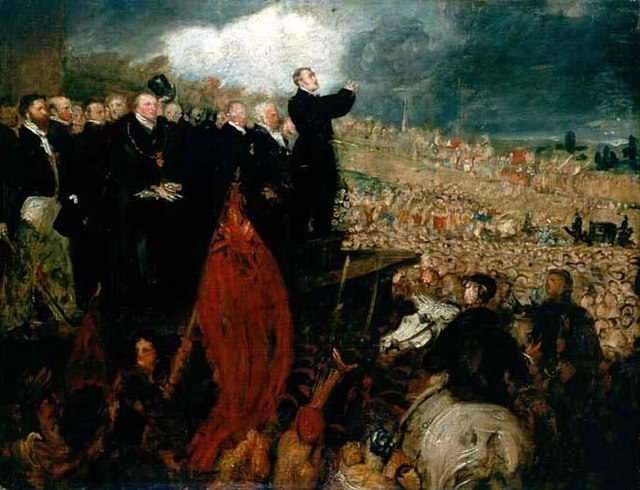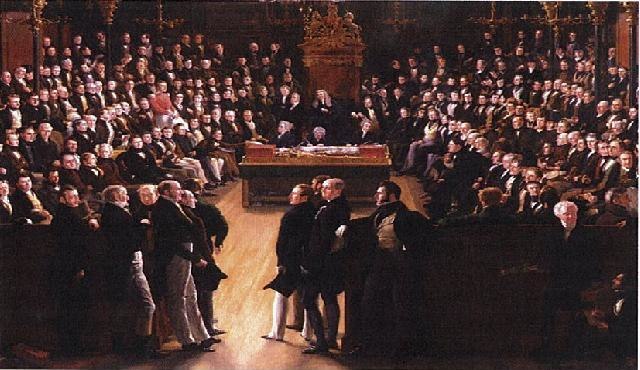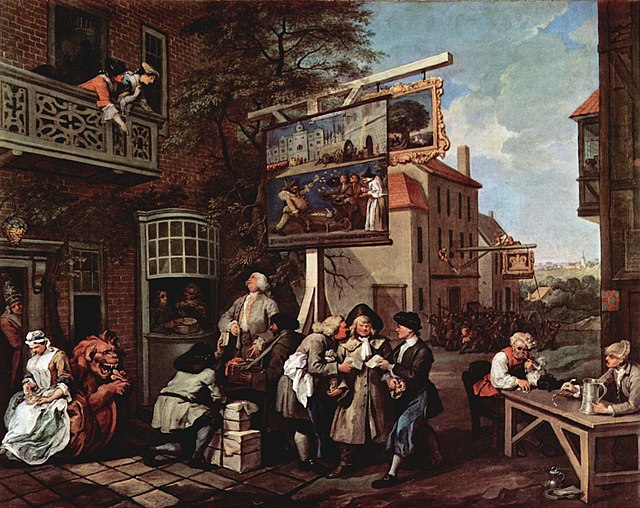The Days of May was a period of significant social unrest and political tension in the United Kingdom in May 1832, after the Tories blocked the Third Reform Bill in the House of Lords, which aimed to extend parliamentary representation to the middle and working classes as well as the newly industrialised cities of the English Midlands and the North of England.
A meeting of the Birmingham Political Union during May 1832, painted by Benjamin Haydon
Charles Grey, 2nd Earl Grey
Thomas Attwood.
The Representation of the People Act 1832 was an Act of Parliament of the United Kingdom that introduced major changes to the electoral system of England and Wales. It reapportioned constituencies to address the unequal distribution of seats and expanded franchise by broadening and standardising the property qualifications to vote. Only qualifying men were able to vote; the Act introduced the first explicit statutory bar to women voting by defining a voter as a male person.
Start of parchment roll of the Reform Act 1832, with royal assent of King William IV marked above Le Roy le veult.
A painting by Sir George Hayter that commemorates the passing of the Act. It depicts the first session of the newly reformed House of Commons on 5 February 1833 held in St Stephen's Chapel. In the foreground, the leading statesmen from the Lords: Charles Grey, 2nd Earl Grey (1764–1845), William Lamb, 2nd Viscount Melbourne (1779–1848), and the Whigs on the left; and Arthur Wellesley, 1st Duke of Wellington (1769–1852), and the Tories on the right. Currently in the
The House of Commons is the lower house of Parliament.
Canvassing for Votes, part of William Hogarth's Humours of an Election series, depicts the political corruption endemic in election campaigns prior to the Great Reform Act.







